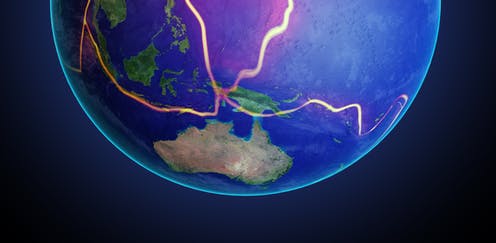Plate tectonics is perhaps the most prominent feature that comes to mind when talking about geography or Earth Science in general. These huge masses of land drifting on the inner layers of the Earth are responsible for a lot of geographical features of Earth as we see it right now. The mighty Himalayas is the biggest example. The effects of plate tectonics are not limited to the geographical features; rather, it is responsible for a lot of ecological and biological changes on our planet as well. The movement of these Plate tectonics has also produced untold calamities in the past as well.
These are all compelling reasons for a systematic push to better study and understand the properties of these goliath pieces of land. Earlier estimates put the start of modern Plate tectonics at 2.8 Billion years ago, which has been revised and pushed back by 400 Million years now. This discovery suggests that the movement of these plates might have had a much more pronounced effect on shaping the planet’s geographical features and its hospitability to life in general. The research conducted by Geologists at Harvard University was quite meticulous in its approach to this problem.

The researchers measured the magnetic orientation of iron-containing minerals in the Honeyeater Basalt. This is a layer of rock that was formed between 3.19 and 3.18 Billion years ago. This patch of rock is part of a much bigger cluster in western Australia that contains rocks that can be as old as 3.5 billion years. Known as the East Pilbara Craton, this patch of ancient rocks was moving about 3.35 billion years ago. The speed of its motion is estimated to be about 2.5 centimetres per year, which is comparable to the speeds with which modern Plate tectonics move now.
The methods that the researchers utilized in forming the conclusion of their study is quite interesting. The Basalt came up like lava, and during the journey, it was hardened into the solid rock-form that we can see today. In the molten lava, there were iron-bearing minerals that acted like little compasses, which could point to the Earth’s Magnetic poles. While the lava was molten, these minerals could move around freely; this enabled these minerals to orient themselves according to the Earth’s magnetic poles. Each new layer of Lava that solidified came after a time-gap. This meant that the researchers could track the change in the orientation of these magnetic minerals to determine the speed with which these cratons were moving.

This method is ingenious; however, it is nothing new. The geologists have long utilized this method to determine the past motions and other such properties of the ancient Plate tectonics. The earlier start for Plate tectonics is quite significant. The period before the start of these plates, the interior of the planet is considered to be too hot for any solid thing to form on the surface of the planet. The first single-celled organisms formed around 3.45 Billion years ago, whether these Plate tectonics were there when it happened or not could add another mystery to the origin of life on our planet.
Further Reading:


